Relocate and Reassign Capacity during Covid-19
In the past decades, an important focus used to be efficiency and scalability. This has led to consolidation and concentration of many functions,...
4 min read
Jan van Veen
Apr 20, 2020 5:33:00 PM
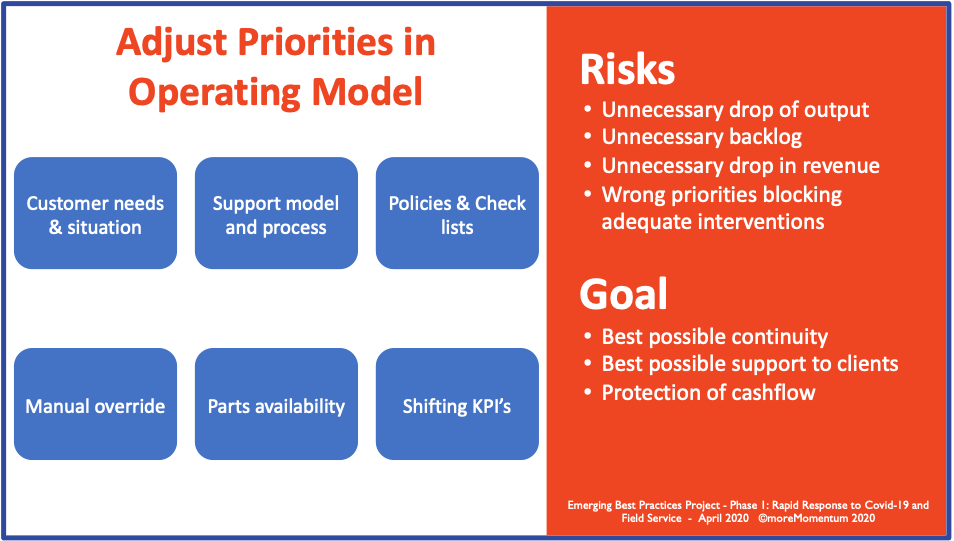
During a crisis many aspects of the normal way of working will not be adequate to continue business, or may simply not be possible to continue. Phase 1 – Rapid Response requires rapid and often drastic adjustments of both priorities and the operating model. Some only for the immediate short term, some maybe for a longer period.
To mitigate the immediate impact of a crisis like Covid-19, one of the major objectives and challenges is to keep people safe.
This is one of the 3 main sections from the "Ultimate Guide for Phase 1 - Rapid Response to Mitigate the Immediate Impact of Covid"
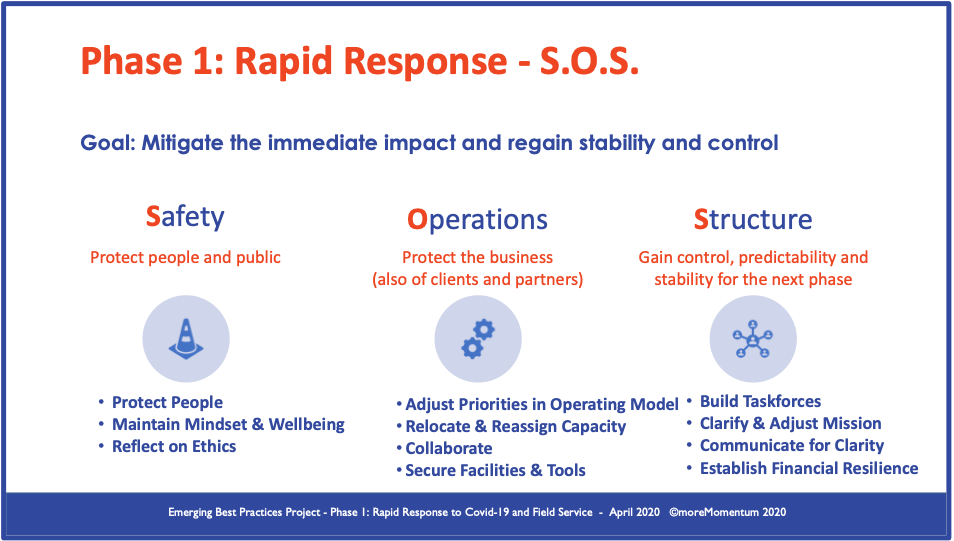
Regarding Adjust Priorities in Operating Model:
Risks to address
Goal
Main aspects
Most certainly the challenges and problems of your clients will change due to the crisis and will continue to change rapidly in the near future. Customer demand may decrease, increase and shift. For some the ability to adjust and continue the support will be more critical than for others, depending on the industry.
Also, purely from a business perspective, some customer segments may be more important than others, considering the impact on their loyalty, your short-term revenue and longer-term revenue.
Here are some best practices from various industry leaders to deal with shifting customer needs:
The aim is to continue (paid) work as much as possible within the pre-requisites of safety to secure business continuity of your own business and the business of your clients.
This will require some significant adjustments in your service delivery model and operating model;
From many projects in the past we know it takes some time before processes are implemented and adhered to globally. In a crisis situation, rigor and discipline in the execution is paramount. Most probably, the change readiness of the organisation will be pretty high in early phases of a crisis. However, it is critical to avoid any misunderstanding, confusion or mistakes from old daily routines.
To ensure robust execution of adjusted processes and procedures, it is important to:
Many algorithms and parameters of automatic functions may not be adequate anymore and lead to wrong decisions and results. For example, workforce planning, job scheduling and parts ordering will change dramatically. On the short term this may require:
To secure the necessary and desired operations, spare parts availability is crucial. To secure service delivery, the following actions are required:
The behaviour of most of the team members and the way they execute their work is greatly driven by the targets and performance indicators by which their performance is measured. In time of crisis, there are many aspects of the operations that are confronted with shifting priorities and requirements.
To avoid confused team members and conflicting interests, it is important to provide teams and team members clarity on what is expected. This includes clarity on the key performance metrics. You probably need to abandon quantifiable metrics, and just indicate the priorities instead.
This needs to be communicated and confirmed regularly and consequently.
Download the full Guide for Phase 1 - Rapid Response
Check out the upcoming Service Transformation Summits:
Subscribe for the our Impulse Letter
With regular updates about service news, trends and best practices.
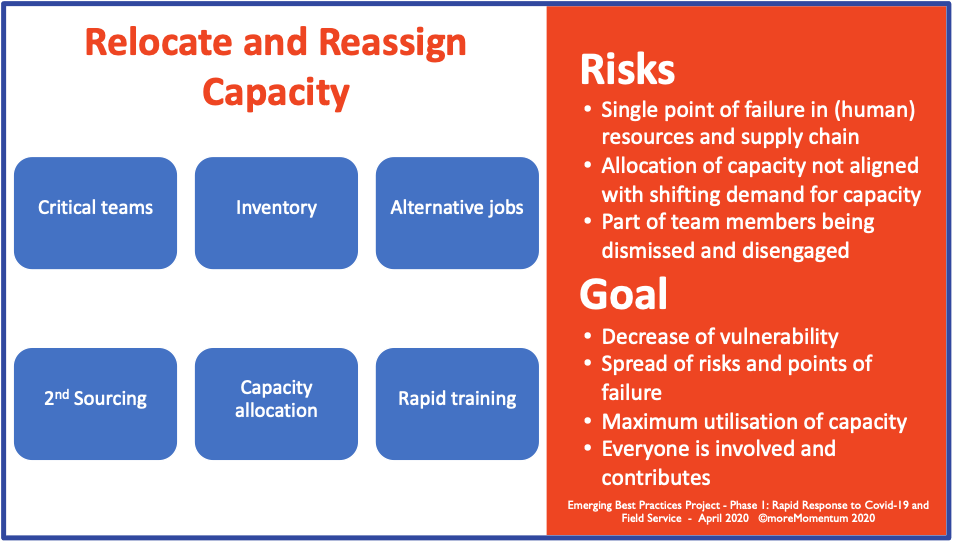
In the past decades, an important focus used to be efficiency and scalability. This has led to consolidation and concentration of many functions,...
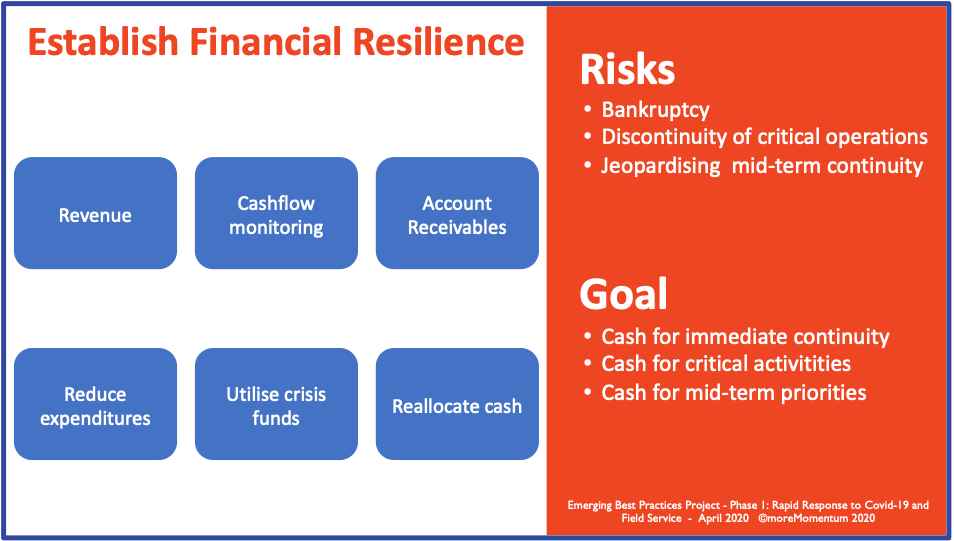
During a crisis, one of the biggest threats for companies is going bankrupt due to lack of cash to cover the immediate expenses. This bankruptcy can...
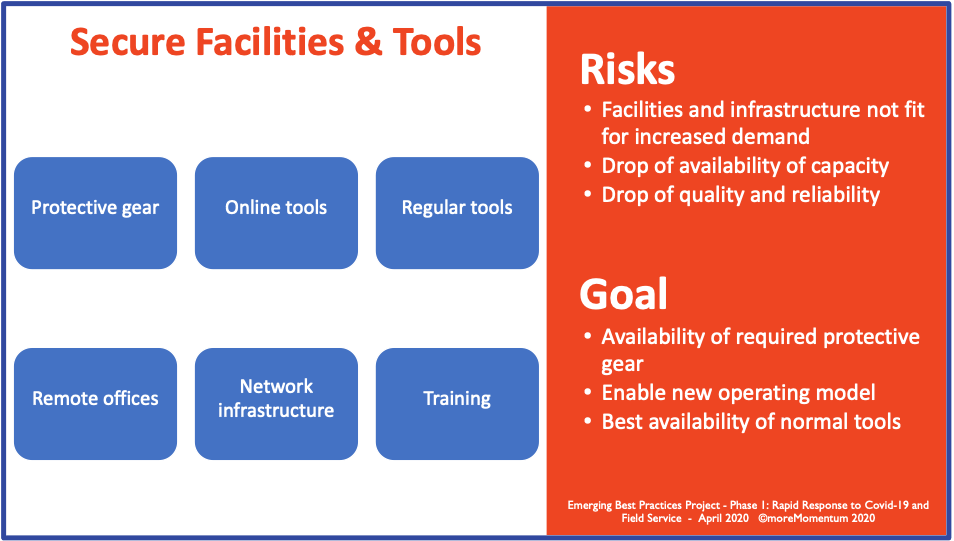
In times of crisis, you may have high demands for a specific critical gear or tool, to secure safety or accommodate a potential increase of demand...